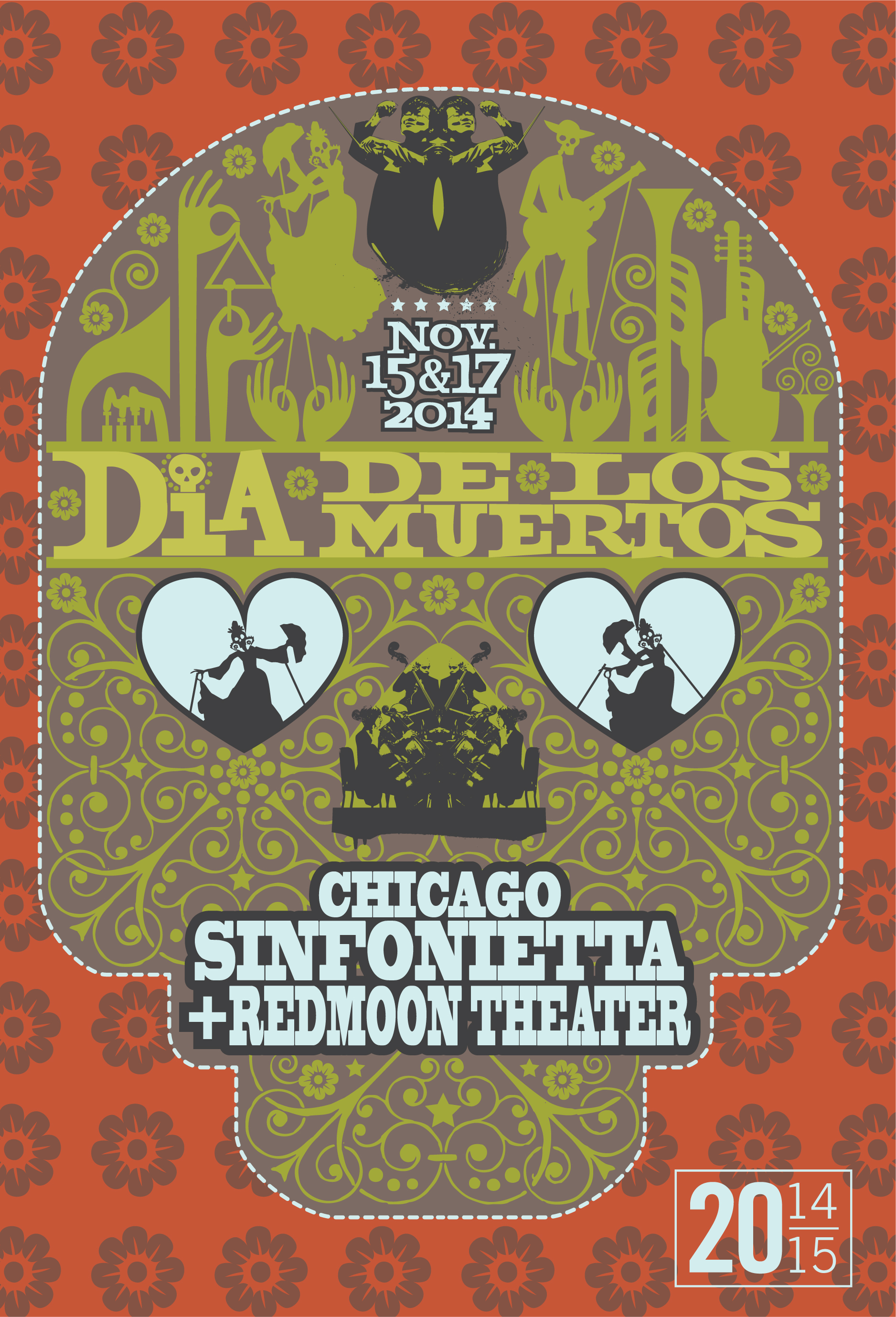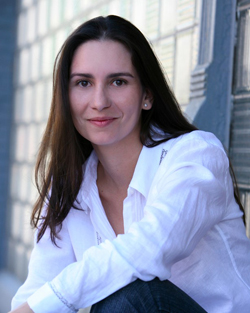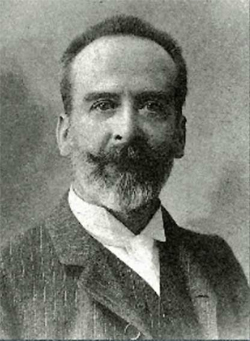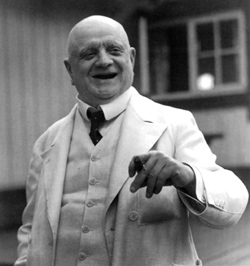
The Mexican holiday of Día de los Muertos (or Day of the Dead) has origins that date from well before 1492 and the conquest of the Americas. Some of its rituals, though, have roots in the Spanish church as well, so it is observed in some form throughout much of Latin America. The holiday honors the remembrance of departed loved ones, mourning their absence while simultaneously celebrating their lives and the continuing spirit that they leave with us. With our fifth annual Day of the Dead concert, the Sinfonietta has firmly established a new holiday tradition that captures both sorrow and joy with an aural and visual pageant worthy of those who have passed before.
ARTISTS
Conductor
 Lucia Matos has appeared with orchestras in the US, Brazil and Europe, including the Chicago Philharmonic, the Illinois Philharmonic,the National Arts Center Orchestra (Canada), the Czech Philharmonic Chamber Orchestra, the Gabrovo Orchestra (Bulgaria), the Campinas Symphony Orchestra (Brazil) and Orchestra da UNICAMP (Brazil). Since 2008, she is the director of orchestra and opera at Northern Illinois University and since 2009, the music director of the Illinois Valley Symphony.
Lucia Matos has appeared with orchestras in the US, Brazil and Europe, including the Chicago Philharmonic, the Illinois Philharmonic,the National Arts Center Orchestra (Canada), the Czech Philharmonic Chamber Orchestra, the Gabrovo Orchestra (Bulgaria), the Campinas Symphony Orchestra (Brazil) and Orchestra da UNICAMP (Brazil). Since 2008, she is the director of orchestra and opera at Northern Illinois University and since 2009, the music director of the Illinois Valley Symphony.
Although born in Brazil, she has lived in the United States since 1998. She is often called upon to lead European repertoire, but she is also well versed in the works of Mexican composers Carlos Chávez and José Pablo Moncayo as well as others from throughout the Americas, including Cláudio Sontoro, Hector Villa-Lobos, Astor Piazzolla and the contemporary composer Gustavo Leone.
A dedicated advocate for contemporary music, Ms. Matos has given premiere performances of numerous orchestral and chamber works, including the bracing Double Concerto for flute and percussion by Alex Mincek featured in this video. Her website contains a full biography, reviews, photos and a complete list of repertoire that she has conducted.
Puppetry
Founded in 1990, the Pilsen-based Redmoon Theater transforms streets, stages, and architectural landmarks, bridging international, economic, cultural and generational boundaries with a unique brand of spectacle: a public art form that is equal parts pageantry, gadgetry, puppetry, robust physical performance and visual art. Redmoon seeks to transform the experience of our urban landscape through ephemeral events that disrupt everyday life and provide opportunities for public engagement, community building and recognition of the possibility of change.
Anyone who attended last year’s Chicago Sinfonietta Day of Dead concert will surely remember the startling moment when skeletal masks designed by Redmoon were suddenly donned by the choir during a performance of Mozart’s Requiem. For Redmoon’s return, they have imagined shadow puppets that will lend an extra eerie air to the Sinfonietta’s performance of Manual de Falla’s passionately dark El Amor Brujo.
Redmoon has a uniquely designed and fun to navigate website. In the video, the folks at Choose Chicago take a trip to Pilsen to visit Redmoon’s mind boggling headquarters.
COMPOSERS
La Bada de Luis Alonso (intermedio)
 La Boda de Luis Alonso, although written by a Spanish composer, is very popular in Mexico. It has even been arranged for Mariachi ensemble, perhaps the ultimate expression of Mexican musical nationalism. It is a very colorful work and a very appropriate selection for a Mexican celebration, which aspects of el dia de los muertos most certainly are. The concert taps into this celebratory spirit right from the start.
La Boda de Luis Alonso, although written by a Spanish composer, is very popular in Mexico. It has even been arranged for Mariachi ensemble, perhaps the ultimate expression of Mexican musical nationalism. It is a very colorful work and a very appropriate selection for a Mexican celebration, which aspects of el dia de los muertos most certainly are. The concert taps into this celebratory spirit right from the start.
Gerónimo Giménez lived and composed most of his output at the turn of the 20th century. Born in Seville, he was a violinist who wrote often for a form of Spanish musical theater called zarazuela. He was especially adept at adopting comic texts to present as zarazuelas. La Boda de Luis Alonso is one of these, and it proved to be his most popular work. Like Manuel de Falla, you can hear the Andulusian roots of flamenco in La Boda , which is a characteristic of the zarazuela. Falla, as we will hear later, explored dark themes of passion in his works. The zarazuela, though, was generally lighter in tone, geared more toward entertainment.
This website has a nice overview of Giménez and his music. You can no doubt imagine how the piece became a Mexican favorite in this video.
Valse triste, Op. 44
 Valse triste literally translates into “sad waltz”, taking the concert into a more introspective place. The Finnish composer Jean Sibelius wrote it for a scene in the play Kuolema, which one again, quite literally, translates to “Death”. And, if fact, the specific scene for which this very piece was written is when a character confronts the figure of death. Written as a macabre dance, the scene invokes ghostly dancers and escalating desperation. The original production program notes say it best: “Back come the shadowy dancers, gyrating in a wild, mad rhythm. The weird gaiety reaches a climax; there is a knock at the door, which flies wide open. The mother utters a despairing cry, the spectral guests vanish, the music dies away. Death stands on the threshold.”
Valse triste literally translates into “sad waltz”, taking the concert into a more introspective place. The Finnish composer Jean Sibelius wrote it for a scene in the play Kuolema, which one again, quite literally, translates to “Death”. And, if fact, the specific scene for which this very piece was written is when a character confronts the figure of death. Written as a macabre dance, the scene invokes ghostly dancers and escalating desperation. The original production program notes say it best: “Back come the shadowy dancers, gyrating in a wild, mad rhythm. The weird gaiety reaches a climax; there is a knock at the door, which flies wide open. The mother utters a despairing cry, the spectral guests vanish, the music dies away. Death stands on the threshold.”
Sibelius later rearranged Valse triste as a stand-alone concert piece, and it went on to become one of his best known works, even though the composer is more generally known for his symphonies and explorations of Finnish national identity. However, it would seem that many a later artist picked up on its spooky origins, as it has been used in films such as Death Takes a Holiday, The Shining and a scene from the animated Allegro non Troppo in which the ghost of a cat roams the ruins of its former home.
The Jean Sibelius website is somewhat awkwardly designed but contains multitudinous information on the composer. Follow the ghost cat into the ruins in this brief clip from Allegro non Troppo.
Mosaico Mexicano
 Born in Monterrey, Mexico in 1976, Arturo Rodríguez is one of two living Mexican classical composers featured in this concert. He was a winner of Mexico’s Mozart Medal in 1996 and is a frequent guest conductor of orchestras in the U.S., Mexico and South America. He’s a prolific composer, writing for concert, orchestra, film and even video games while collaborating with major figures in contemporary music like Osvaldo Golijov and Stewart Copland, who you might remember as the drummer in the Police.
Born in Monterrey, Mexico in 1976, Arturo Rodríguez is one of two living Mexican classical composers featured in this concert. He was a winner of Mexico’s Mozart Medal in 1996 and is a frequent guest conductor of orchestras in the U.S., Mexico and South America. He’s a prolific composer, writing for concert, orchestra, film and even video games while collaborating with major figures in contemporary music like Osvaldo Golijov and Stewart Copland, who you might remember as the drummer in the Police.
With Mosaico Mexicano, the concert returns exuberantly into celebratory mode. While avoiding direct quotes of folkloric songs, the piece invokes Mexico and its people. Its sections are based, in turns, by rousing mariachi, indigenous Indian music and seranata, a sort of romantic ballad that a man would sing to persuade a woman of his love. “Mosaico Mexicano may be an over-romanticized account of the music of my country or the country itself,” says the composer, “but those are the sounds that I hear in my head every time I hear the word México.”
Arturo Rodriguez has his own website with a bio, list of works and reviews. This video is a stirring performance by the New Millennium Philharmonic.
El Amor Brujo (Ballet Suite)
 The roots of Latin American music, both folkloric and classical, can be traced back to Europe and especially Spain. Manuel de Falla, perhaps Spain’s most important composer, used the Andalusian flamenco tradition, which itself has roots in Arabic music, as the basis of several of his best known compositions. The ballet El Amor Brujo is chief among them. The story is an appropriately supernatural one for a Day of the Dead concert, as its plot follows the haunting of a woman by the ghost of her (unfaithful) dead husband, even as she seeks true love with another. She is so haunted, in fact, that she dances with the ghost every night, until the spirit is finally banished during a dramatic ritual fire dance.
The roots of Latin American music, both folkloric and classical, can be traced back to Europe and especially Spain. Manuel de Falla, perhaps Spain’s most important composer, used the Andalusian flamenco tradition, which itself has roots in Arabic music, as the basis of several of his best known compositions. The ballet El Amor Brujo is chief among them. The story is an appropriately supernatural one for a Day of the Dead concert, as its plot follows the haunting of a woman by the ghost of her (unfaithful) dead husband, even as she seeks true love with another. She is so haunted, in fact, that she dances with the ghost every night, until the spirit is finally banished during a dramatic ritual fire dance.
Falla was born in the Andulusian city of Cadiz, the same place that Columbus launched his fateful voyage to the “New World” from in 1492. His first important work was the one-act opera La vida breve (or Life is Short), written in 1905 while Falla was living in Madrid. El Amor Brujo was originally scored for chamber orchestra, then as a symphonic piece, it eventually became a ballet in 1925.
Manuel de Falla’s website has a detailed chronology of his life and complete list of his works in both English and Spanish. This video is filmmaker Carlos Saura’s hypnotic interpretation of the El Amor Brujo from his film of the same name.
Danzon No. 2
 Post-revolutionary Mexico produced several composers whose art was shaped by national identity and their compositions sometimes reached the status of unofficial second national anthems. Carlos Chávez, José Pablo Moncayo and Silvestre Revueltas were active in the 1920s through the 1950s. Arturo Márquez, though of a later generation, earns his status among them with his Danzón No. 2.
Post-revolutionary Mexico produced several composers whose art was shaped by national identity and their compositions sometimes reached the status of unofficial second national anthems. Carlos Chávez, José Pablo Moncayo and Silvestre Revueltas were active in the 1920s through the 1950s. Arturo Márquez, though of a later generation, earns his status among them with his Danzón No. 2.
Márquez, born in 1950, moved between the U.S. and Mexico several times during his early years. He was born in Mexico from parents who moved there from Arizona. His adolescence was spent in Los Angeles where he listened to mariachi music, Mexican pop stars and (being the 1960s) the Beatles and other rock groups while studying violin, but returned to Mexico at the age of 17. He entered music conservatory and eventually returned to L.A. on a Fulbright scholarship where he earned an MFA in composition from the California Institute of the Arts. He discovered the pulsating rhythm of the danzón, a form with roots in Cuba that is a deep part of folkloric tradition in the port city of Veracruz, through the Latin ballroom dancing scene in Mexico City. Márquez wrote five Danzones, and it is No. 2, with its seductive rhythms, that achieved ‘second national anthem’ status.
The video is a stirring performance of the piece by Gustavo Dudamel leading the Simon Bolivar Symphony Orchestra.
Research and copywriting by Don Macica.
Don is a marketing consultant to the performing arts community and a contributing writer to several online publications including Aguzate and Arte y Vida Chicago. When not traveling, he lives a stone's throw from Lake Michigan in Chicago’s Rogers Park neighborhood. He is the author of Border Radio, a blog about music, migration and cultural exchange.
